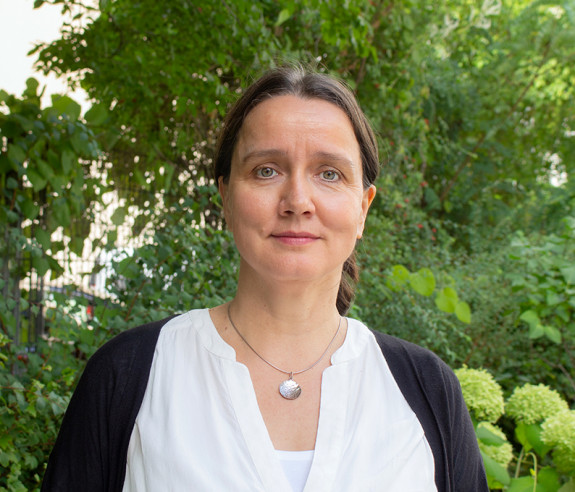
The city as a raw materials store – Why cities should act circularly
What if the economy, environment and society in a city were interlinked in a circular way? Products are repaired, recycled or provided as services. Local manufacturing produces spare parts and products exactly when they are needed, while urban agriculture and renewable energies supply much of the city and region. Buildings are modular, sustainable and can be dismantled. The city is seen as the region’s raw materials store, where materials are recovered and turned into new products. Water and waste management follow regenerative principles. Smart platforms enable goods to be shared. Community, resource sharing and social interaction are created by people living in green neighbourhoods with local repair, second-hand and sharing services as well as flexible living and working spaces. Diverse educational opportunities and social and technological innovation are driving this transformation.
Numerous studies – including those by WWF Germany, the Bertelsmann Foundation and the Wuppertal Institute as well as initiatives by cities and regions in Europe (CCD, CCRI) – show that such an international circular economy can be key to tackling various current challenges. This holistic economic model is seen as a way to increase resource security, create new local and regional value and employment opportunities, reduce greenhouse gas emissions and resource consumption, and thus contribute to climate and biodiversity protection as well as economic security and prosperity.
The European Green Deal and the Circular Economy Action Plan form the framework for municipal and regional circular economy activities. The EU’s taxonomy requirements and the Corporate Sustainability Reporting Directive (CSRD) obligations for companies to transition to a circular economy also play an important role. Even if the CSRD is to be scaled back, the new Clean Industrial Deal aims to facilitate the transformation towards a circular economy: by 2030, 24% of the EU’s raw materials are set to be used in circular flows. This would be more than double (11.7%) the level in 2023 (Eurostat). The climate neutrality target for 2050 remains important, with a new interim target of 90 per cent decarbonisation by 2040.
Almost all EU Member States have adopted circular economy strategies. On 4 December 2024, Germany adopted the National Circular Economy Strategy (NKWS), which provides guidance to the federal states, municipalities and regions in Germany on measures to advance the transition to a circular economy. Focal points include circular product design in accordance with the European Ecodesign Regulation, implementing the right to repair and promoting repair initiatives, the digital product passport as well as procurement guidelines for the public sector based on circular economy principles. European cities are also focussing on circular strategies under the influence of the various crises. For instance, during the Covid-19 pandemic Amsterdam decided to develop its circular economy strategy based on the doughnut economy model. Strategically, Amsterdam is focused on developing technological solutions that promote climate protection and secure its own socio-economic base in the long term. The latter is a key factor in the circular economy strategies of many European cities. This is because the transition from a linear to a circular economy must be holistic: technological innovations and new cultural and social practices are needed. The question of how we deal with the built environment – our resources – requires openness towards new spatial configurations, architectural aesthetics, potential uses and thus new approaches to urban design. At the same time, this presents an opportunity to significantly boost innovation in the socio-ecological transformation, for instance through new circular and sustainable business models and employment opportunities. Last but not least, given the increasing uncertainties in global trade, security of supply can be increased through closed local and regional material and product cycles, and regional value creation can also be organised sustainably in an urban-rural context.
Municipalities have room for manoeuvre to support the transition to circular thinking and action and to build resilient structures:
- A key component is infrastructure planning, which among other things makes it possible to establish urban recycling hubs, promote repair centres and develop sustainable logistics systems for returning and further processing materials. Municipalities can create frameworks that strengthen sharing models and support resource-saving mobility. By planning “circular economy neighbourhoods”, sustainable supply and recycling structures (e.g. through urban production and agriculture) can be directly integrated into urban development.
- Municipalities can exert a regulatory influence through legislation and taxation. Principles of the circular economy can be embedded in urban land-use planning and the use of secondary building materials and flexible, modular construction methods can be promoted through land development requirements. A municipal packaging tax can increase the incentive to use reusable tableware.
- A key lever is a consistently sustainable municipal procurement policy. Circular criteria for public procurement and recommendations for (municipal) enterprises can actively strengthen the market for circular products and services.
- Municipalities can help to promote circular business models through municipal economic development programmes: by providing advice, space and networks they can generate impetus, create incentives and initiate collaboration to develop resource-saving production processes, expand repair and recycling solutions, and drive innovation in facilitating industrial symbiosis.
- Circular transition begins in people’s minds and means changing the way we act and consume. This is why awareness-raising and educational measures in all areas of municipal action provide important guiding principles for transitioning to a circular city.
Initiatives and stakeholders in Germany, including those from the waste, construction and food industries as well as mobility and science, are driving the circular economy forward. The practice of European cities shows that circular cities do not emerge by chance. Rather, good governance design allows the circular actors from government and administration, business, science and civil society to be identified and networked in a targeted manner in order to successfully realise projects.
The path to a circular city is a marathon that requires strategic planning and in which all participants should pursue common guiding goals. A municipal or regional circular economy strategy can serve as a compass, define paths, set frameworks and ensure consistency between the measures in the fields of action. The vision of the circular city does not emerge in a municipal vacuum; it makes an important contribution to sustainable urban development. It is important to link up with municipal sustainability strategies and existing concepts (e.g. climate protection, zero waste). The circular economy can thus become a locational advantage that attracts sustainable enterprises and creates long-term economic, ecological and social added value.
